Great Lent & Easter
Great Lent - Піст
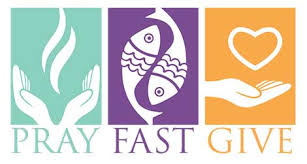
This year lent began on February 8, 2016. Some people have asked “what’s the big deal about Lent?” Lent is not something that we brush off our clothes. It is the 40-day period of time in the Church year before Easter (known as the Great Fast.) It is intended to be a time of serious personal reflection, self-denial, and repentance that symbolizes Jesus' withdrawal into the desert for 40 days before he began his public ministry.
For some, Lent has become so reduced to mere symbolism in the Church that there is very little to differentiate it from other periods of the year. Even when people say they are going to give up something for Lent, it is such a trivial thing so as not to cause them any serious discomfort. Have we become too modern, too "with it" to suffer anything so archaic, so obsolete, as a traditional Lenten observance? We must remember that real "self-denial" is not the outward reminder of what we "gave up," but the inner change of heart.
As we begin our Lenten journey, what must we do in order for God to forgive us? Jesus talks about God’s forgiveness of us and about our forgiveness of one another. What does forgiveness mean in your heart? Lent is a time that we are invited to change our lifestyle in preparation for Easter. Like anything else in life, the more we understand what is happening, the more we indulge in the banquet and the more we will experience God’s healing presence in our lives. It is a time that we are invited to change our lifestyle in preparation for Easter.
Everything You Wanted to Know about Lent but Were Afraid to Ask
Have questions about Lent?
- Isn't Lent kind of morbid and negative?
- Where did Lent come from?
- But why the big interest in 40 days?
- So what should I do during Lent?
- Why this three (fasting, prayer and almsgiving)?
- What's this about fasting?
- Then what does fasting mean in practice?
- And the almsgiving?
- That sound great - when do we start?
- What about Ash Wednesday?
Find answers at the click of the button. (Please be patient, it's a bit slow-loading.)
Lent and Easter Dates at a Glance

LENT (Піст - Peest)
The 40-day period preceding Easter Sunday, beginning this year on February 15, 2010. Fasting with no meat eaten on Wednesdays and Fridays and abstinence from dancing and partying continue to be part of the traditionalobservation of Lent. Religious observances include rituals of the Liturgy of Presanctified Gifts and Sorokousty Services. It is a time for soul cleansing and penitence.
The annual commemoration of Christ’s sufferings, Death and Resurrection begins on Saturday before Palm Sunday, the Saturday of Lazarus' resurrection, which is symbolic of Christ's Death and Resurrection. Holy Week services in the Byzantine rite are lengthy, contemplative and deeply penitential as we relive the mystery of our redemption.
PALM (WILLOW) SUNDAY (Шуткова/Квітна Неділя - Shutkova Nedilia or Kvitna Nedilia)
Commemorates Christ’s entry into Jerusalem. The pussy willows (used in place of palms) represent the scourging of Christ, and give rise to a practice among Ukrainians to tap each other with the willows.
(Budding pussy willows also indicate the coming of spring and is symbolic of Christ’s resurrection.)
HOLY WEEK
The week preceding Easter when preparations for the holy day are done (i.e. housecleaning, cooking, baking, writing pysanky (Easter eggs), etc.
MONDAY, TUESDAY, WEDNESDAY
On these days the Lenten structure and tone of the liturgies stress the importance of repentance and the need of vigilance in prayer. The first Monday of Lent is kept as a strict fast with abstinence from all meat, eggs and dairy products.
HOLY THURSDAY (Великий Четвер - Velykyi Chetver, Strasty Khrysta)
Also known as "Passion Thursday" when the Passion of Christ is commemorated. Evening services of Passion or Strasty is conducted during which the 12 Gospels on the Passion and Death of our Lord are read.
GOOD FRIDAY (Велика П’ятниця -Velyka Piatnytsia)
The Crucifixion of Christ. The moving service held on this day is the solemn burial procession bearing the Holy Shroud or Plashchanytsia (the tomb of Christ.) After the procession is made three times around the Church, the shroud is laid out for veneration on a replica of the sepulcher (tomb.) In the evening the service of the Jerusalem Matins is celebrated. This is a day of strict fasting, with abstinence from meat, eggs and dairy products.
HOLY SATURDAY (Велика Cyбота -Velyka Sybota)
This day is spent in silent waiting for Christ’s resurrection. A visit to the Plashchanytsia, for quiet prayer and reflection is most important on Holy Saturday. A special ceremony is held to bless Easter baskets.
EASTER SUNDAY (Воскресіння Христове -Voskreysennia Khrystove )
The Church celebrates the resurrection of Christ with a joyful liturgy. The food which was blessed the day before is now shared with family.
EASTER MONDAY / EASTER TUESDAY (Світлий Понеділок / Світлий Вівторок)
Religious observances with attendance at Divine Liturgy is observed for two more days after Easter Sunday.
Why Confession?
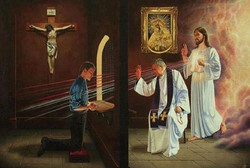
During Lent we are called to reform our lives and become holy. We do this by focusing on God through prayer, treating others well and changing our negative behaviour. A good way to begin Lent is by reconciling with God through the Sacrament of Reconciliation (Confession).
Confession is not only a spiritual cleansing but a spiritual awakening. Those who have benefited from Confession know the liberating feeling of the words of the priest as he pronounces the forgiveness promised by Christ “Go in peace, your sins are forgiven.”
When an orthodox Christian falls into sin, the promises made at Baptism are broken. By sin we separate ourselves from God and from His Church. But God, in His mercy, foresaw that we are weak human beings and we would have to be cleansed anew from sins by confession.
Sin is an offence against God, and therefore it is up to God alone to forgive sin. So then why have so many people asked “why can’t I just confess my sins directly to God?” It is true that our first response should be an immediate appeal to God for mercy and forgiveness. God is omniscient, All-Knowing, even when we confess secretly in our hearts, we are not telling Him anything that He doesn’t already know.
We must acknowledge our sins and take responsibility for our actions and the consequences.
We must seek the forgiveness of the community we offended. So in order to do this, we must confess to our priest, who is the legitimate representative of the Church. We seek the counsel and assistance of the priest who is trained to heal the “burdens” of the soul.
It is very easy for us to confess in private and therefore never fully admit our sins. The Mystery of Confession belongs to the Church, not the individual conscience, therefore, as in all Mysteries of the Church, a priest is required for conferring the sacramental love of confession to the faithful of the Church. Repentance should be a regular part of our lives.
Confession is the sacrament of penance— it takes away our sins. It is God’s gift to us. Mortal sin takes away God’s grace from the soul. The sacrament of penance restores God’s grace to the soul.
Preparing Yourself for Confession
- Prepare yourself by thinking about your life and what actions or inactions have hindered your relationship with God, others and yourself. Say the Prayer before the Examination of Conscience:
Heavenly King, Comforter, Spirit of Truth, Who are everywhere present and fill all things, Treasury of Blessings and
Bestower of Life, come and dwell within me, cleanse me of all stain, and save my soul, O Gracious Lord.
- Go over your sins, by reflecting upon the 10 Commandments or meditating upon the Beatitudes.
- You should have contrition and genuine sorrow for your sins. Approaching the Mystery of Confession with no concern for the state of your soul is to add even more to you inventory of sins.
- Have confidence in Christ’s mercy and approach Confession knowing that we are assured of the mercy and love of Jesus Christ.
Forgiveness is always free, but that doesn't mean that confession is always easy.
Divine Liturgy of Presanctified Gifts
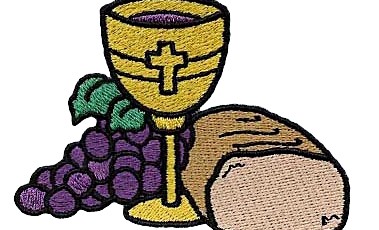
The Liturgy of the Presanctified Gifts is one of the main liturgical expressions of Great Lent. During Great Lent the Eucharist is not celebrated, with the exception of Saturdays and Sundays, as the Eucharist is the sacrament of Christ's Resurrection. The only exception is if the Feast of the Annunciation falls on any day during Great Lent, the complete Divine Liturgy is celebrated.
Because Lent is the time of increased spiritual effort, it is also a time of increased temptation. The Church, therefore, established a special service of communion whereby the Holy Gifts have been consecrated on the previous Sunday and reserved on the altar. The Divine Liturgy of the Presanctified Gifts is an evening liturgical service of solemn Lenten Vespers combined with Holy Communion. It is commonly celebrated on Wednesday and Friday evenings, although some churches may celebrate it only on one of these days.
Palm Sunday - Квітна Неділя

Palm Sunday recalls the triumphant entry of Jesus into the city of Jerusalem before His passion. Jesus Christ, after raising Lazarus, (Jn. 11:1-44) was finally recognized by the Jewish people as their Messiah.
When He arrived in Jerusalem to celebrate the Passover, they greeted Him with a triumphant welcome. With Jesus’ riding on a donkey the people began to spread their cloaks and strewed "branches from the trees" (Mt. 21:8) on the road in front of Him. Others took "branches of palms" (Jn. 12:13) in their hands and, cheering, cried out: "Hosanna! Hosanna to the Son of David! Blessed is He Who comes in the name of the Lord! Hosanna in the highest!" (Mt. 21:9).
As Jesus was entering the city, surrounded by the excited crowds, the Scribes and the Pharisees became alarmed and decided to stop Him at any cost. But the people kept acclaiming Him as their Messiah, saying: "This is the Prophet, Jesus from Nazareth in Galilee!" (Mt. 21:10).
Palm Sunday was celebrated with particular solemnity since the first centuries of Christianity. In the Byzantine Rite it is considered to be one of the twelve Major Feasts of the liturgical year. On this Sunday, pussy willows - loza (instead of palm branches) are blessed and distributed to the faithful.
The loza, pussy willow branches, have an additional significance of showing life early in the spring, symbolizing the hope of the Resurrection. They are gathered and then blessed at the church service. After the service, parishioners gently tap each other with the willows, in imitation of the scourging of Christ while repeating:
“The willow hits, not I;
A week from now it will be Easter .”
Лоза б'є, не я б'ю,
від нині за тиждень буде Великдень.
The tapping with the willow also signifies the wishes for health, happiness and wealth.
After Easter, the willow should be entwined on a cross or placed above an icon to serve as a sign of salvation and a pledge of protection and blessing during the coming year. The willow can also be stuck in the ground — because legend has it, that if daughters married, their young husband would be healthy, strong and a good provider. Another tradition regarding the blessed willows is that they could be burned and the ashes scattered on the fields to ensure a good crop.
Holy Week - Strasnyi Tyhzden
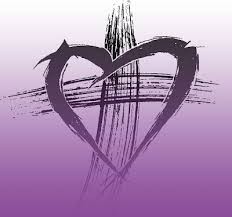
Christ's suffering, death and resurrection begins on the Saturday before Palm Sunday, the Saturday of Lazarus' resurrection, which is symbolic of Christ's death and Resurrection.
Holy Week services in the Byzantine rite are lengthy, contemplative and deeply penitential as we relive the mystery of our redemption. The Lenten structure and tone of the liturgies stress the importance of repentance and the need of vigilance in prayer.
The week before Easter is called "white, clean, illuminating, grand, Passion Week or willow week." This is when preparations for the most holy of days, Easter Sunday, are done. The days are busy with physical and spiritual cleansing and rebirth. Many begin housecleaning, cooking, baking and writing pysanky. The icons are draped with rushnyky - embroidered linen towels in anticipation of “Velykden'.
Following supper on Passion Thursday through to Easter morning no meat, eggs or dairy products are eaten.
Holy Thursday - Великий Четвер
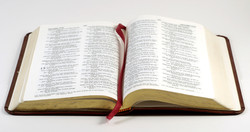
Holy Thursday recalls the Passion of Christ. The Passion service consists of the reading of the Twelve Gospels relating to the suffering of Jesus—this is symbolic of the 12 hours of Christ’s sleepless night. The gospels are read or sung along with prayers, prostrations and hymns. A bell is rung once after the first Gospel, twice after the second, and so on. The bells are then silenced and replaced with either wooden clappers or the striking of a mallet on a board. The bells are not heard again until Easter morning. This day is also commemorative of the institution of the Holy Eucharist and the priesthood, as this was the day of Christ ’s Last Supper with His Apostles. On this day, the bishop also blesses the chrism which will be used for Chrismation throughout the year. The sacrament of Confession is also observed.
Good Friday - The Plashchanytsia and Tomb
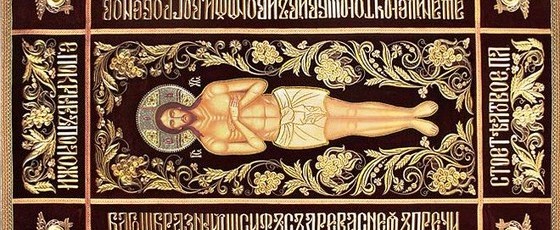
One of the most prominent symbols and integral part of the Good Friday service is the Epitaphion (Plashchanytsia) – The Holy Shroud. It is considered to be the sheet in which our Lord’s body was wrapped in when He was laid in the tomb.
The origin of the Holy Shroud as it is used on Good Friday is intriguing. During the Divine Liturgy the priest covers the sacred gifts with a large veil called the aer. The aer represents the lifeless body of Jesus as it was placed in the tomb. This is why the picture of the placing of the body of Christ in the tomb is often depicted on the aer.
When the priest carries the aer in a procession immediately before the Holy Gifts, he covers the chalice and paten with the aer as he prays silently, “The Noble Joseph took down Your most pure body from the cross and, anointing it with fragrant spices, he wrapped it in a clean linen and put it in a new tomb." From this aer the use of the Holy Shroud was developed for Good Friday. Around the border of the Plashchanytsia are inscribed the words of the Troparion, “The noble Joseph….”
During the service on Good Friday, a procession is made around the church three times. The Holy Shroud is carried by four persons each holding one of its four corners. This solemn procession is not only symbolic of Jesus’ funeral procession but it is also the Son of God, the Immortal One, proceeding through the darkness of Hades and preannouncing the joy of the Resurrection.
Following the procession, the Holy Shroud is placed in the symbolic tomb in front of the altar. Beautiful flowers and candles adorn the tomb. During this time, the Troparion “The Noble Joseph…” is sung.
Behind the tomb stands a large, plain cross. The faithful approach the shroud on their knees and make three prostrations and kiss the five wounds of Christ. The shroud remains exposed for veneration until the Matins of the Resurrection on Easter morning. It is then carried into the sanctuary and placed upon the holy altar. It is kept on the altar for forty days until the Feast of the Ascension of Jesus, symbolizing the forty days He remained on earth following His Resurrection.
Good Friday not only commemorates the death and burial of Jesus but also His descent into Hades. In this descent, Jesus, Who is the Life, encounters and destroys death. The Good Friday Service is truly one of the most moving spiritual experiences of the Church Year.
But the real question’s are: What does all this mean? What should it mean to those present at this service? What difference does it make in our lives today that Christ died for us?
St. Paul answered these questions for us: ”As Christ was raised from the dead by the glory of the Father, we too might walk in newness of life…. So you also must consider yourselves dead to sin and alive to God in Christ Jesus.”(Romans 6:4, 11)
How do we become dead to sin? St. Paul stated “Put to death what is earthly in you: immorality, impurity, anger, wrath, slander, evil desire, greed, envy, pride….” The list could go on and on but I am sure you get the picture.
Now, how do we become alive to God? We need to listen to God’s voice, have the life of God in us, and experience His love even in the midst of suffering, just as Jesus did. This is what the tomb of Christ and the Plashchanytsia of Good Friday should signify to us: a new life, a resurrected life, brought on by a new awakening to God and a deadness to sin – the sin that crucified Jesus.
Holy Saturday - Велика Субота
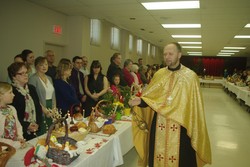
On Holy Saturday, “Nadhrobne” (Adoration of the Holy Grave) is observed. It is a time for the faithful to revisit the Plashchanytsia. If not already done on Good Friday, it is obligatory to do so on this day.
A guard of honour keeps vigil at the Holy Sepulcher. It is also a time spent in silent prayer and preparation for the great feast of Christ's Resurrection on Sunday.
Fasting continues throughout Holy Saturday to preserve the purity of our soul for receiving Holy Communion on Easter Sunday. The Liturgy of St. Basil the Great is celebrated with Solemn Vespers. A prominent feature of Holy Saturday is the blessing of Easter baskets containing the traditional Easter foods eaten on Easter morning. Traditionally, Easter baskets are to be blessed on Easter Sunday following Liturgy but due to logistics and time constraints, our Church has also included Saturday for blessing of baskets.
What’s in Your Basket? The Meaning of the Easter Basket
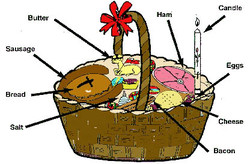
Paska, the Easter bread, is a large, round, elaborately decorated loaf of bread made of white flour. It symbolizes the joy of life given to us by Jesus Christ.
Babka: A tall, sweet bread, placed in the Easter basket in honor of Mary, the Mother of God, who was intimately connected with her Son’s suffering and death.
Eggs: A sign of hope and resurrection. Jesus comes forth from the tomb as the chick breaks the shell at birth. Because of the special meaning, it is fitting that eggs which are to be blessed be decorated with symbols of Easter.
Horseradish symbolizes the bitterness of sin and the difficulties that we endure throughout our earthly life. It also reminds us of the bitterness of Jesus' passion by which He entered into glory.
Butter is symbolic of burial ointment. This product may be shaped into a lamb or decorated with whole cloves or peppercorns in the form of a cross. Jesus is our Paschal Lamb by whose blood we were saved.
Cottage cheese, bland in taste, reminds us of the need for self-control and moderation which we should cultivate in our daily lives.
Salt: a reminder of the commitment to follow Christ: in His words "You are the salt of the earth...."
Kovbasa: a spicy garlic sausage is indicative of God's favor and generosity.
Ham: The richness of this meat is symbolic of the great joy and abundance of Easter.
Pysanky: Symbolic of Christ's death and Resurrection. These eggs are beautifully decorated with symbols derived from nature and later adapted to the Christian way of worship.
Beeswax candle is placed in the basket and lit during the blessing celebration. It is symbolic of Christ, "the Light of the World,” who brought us the glorious good news of the New Life.
Rushnyk (cover) This embroidered cloth reminds us of Christ's shroud and of our baptismal robe ‘kryszma’. Being cleansed with the baptismal waters, we celebrate the joy of New Life by putting on the kryszma.
The baskets should be lined with an embroidered rushnyk, serviette or a white napkin. They can also be adorned with green periwinkle, pussy willows and spring flowers. Remember that the basket should contain only a sampling of the foods you are going to eat for Easter breakfast. It is important to remove all cellophane, foil and paper from the basket prior to having Father bless it. Any items such as eggshells, leftover food that will not be eaten, flowers, cellophane, foil or paper napkins that have been blessed or may have come in contact with the blessed water must either be burned or buried and not disposed of in the garbage.
The Feast of the Resurrection of Our Lord - Воскресіння Христове
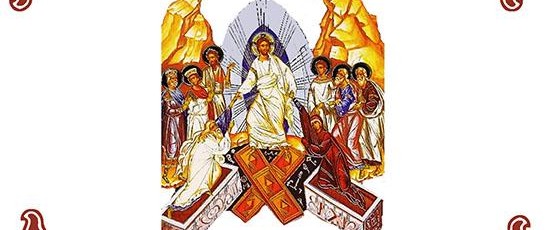
The Feast of the Resurrection of Our Lord (Easter) is the most beautiful, joyous holy day - a holy day trumpeting truth, a holy day restoring souls - it is the Feast of Feasts! The resurrection of Christ is the foundation of our faith. What meaning would Christ's teachings have had if the Resurrection, which He had so frequently predicted, had not taken place.
The resurrectional celebrations begin with a procession around the church accompanied by the ringing of the church bells. The priest and his acolytes carry the Cross, the Gospel and icons, and are followed by all the faithful in a procession, three times around the Church.
The procession is symbolic of the myrrh-bearing women, who early Sunday Morning went to the sepulcher (tomb), intending to anoint the body of Christ. During this time, the church doors remain closed to symbolize the closed tomb of Christ. The priest strikes the main doors of the church with the hand cross and it is opened from within. This symbolizes the opening of heaven's gates by Christ's saving death and His rising form the dead.
The most beautiful and profound moment of the service is the joyful heralding of a risen Christ in the singing of the traditional Ukrainian hymn "Khrystos Voskres" (Christ is Risen), to which the whole congregation respond in unison "Voistynu Voskres!" (Indeed He is Risen).
The Resurrection tropar is sung frequently during the Liturgy:
Christ is risen from the dead Trampling death by death And to those in the grave He granted life!
Христос Воскрес із мертвих, смертю смерть подолав, і тим, що в гробах, життя дарував!
The Easter Service is celebrated with joy. Bells are rung each time Khrystos Voskres is sung. Towards the end of the Liturgy, the priest blesses the Artos ("round bread") on the top of which an icon is tied representing Christ coming forth in glory from the grave. The Artos is placed on the Tetrapod for the faithful to kiss as a reminder of Christ's presence among them. It remains there throughout the entire Bright Week until Bright Saturday when it is cut up and distributed to the faithful on the Sunday of St. Thomas.
The royal gates are also kept open the entire Easter week to symbolize that the gates of Heaven have been opened to all faithful believers. During Easter week and on Sundays until Ascension, the priest blesses the faithful with a cross. The Resurrection tropar is sung after each service.
In early days, all churches in Ukraine were built to face the East. When liturgy was ending and the priest first said "Khrystos Voskres," the doors of the church would be opened and the rays of the rising sun would envelop the faithful.
Following liturgy the people greeted each other by kissing each other three times - this is called "Khrystosuvannya." The parishioners returned home to end the long fast with Sviachene.
The table is covered with a beautiful white cloth. In the center of the table sits the paska with a candle in it surrounded by pysanky. The Easter meal is preceded by prayer and by the singing of "Khrystos Voskres". The meal begins with a serving of blessed egg, which the head of household gives to all the family members. This symbolizes family unity. After bowing toward the icons he shares the egg with each family member, starting with the eldest.
The paska is cut and the first meal of the Easter season begins. The breakfast menu consists of cooked eggs, a variety of hot and cold meats, roast suckling pig, cheese, salads, horseradish and beet relish, and a number of delectable Easter breads and pastries. It's forbidden to throw out any blessed food, which as not been eaten, including eggshells. The remnants from the Easter basket must be either burned or buried.
PENTECOST - The Descent of the Holy Spirit
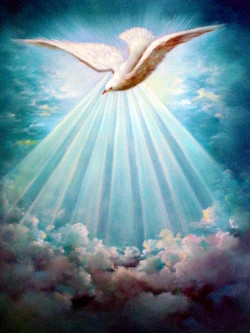
The Feast of Pentecost is celebrated each year on the 50th day after the glorious feast of the Resurrection and ten days after the feast of the Ascension of Christ. It is always celebrated on a Sunday. It is one of the three greatest feasts in the Liturgical Year following the Nativity and the Resurrection of Our Lord. In 2016, we celebrate this feast on May 15th.
Pentecost commemorates the visible descent of the Holy Spirit upon the apostles. On this day, the Holy Spirit anointed the apostles as preachers of the Good News of Christ. This is the day that the Church was born and began to function. It is considered to be the birthday of the Church.
Pentecost is Greek for "fiftieth day". The feast takes its name from the 50th day after the Jewish feast of the Passover and the 50th day from the beginning of harvest. Originally, Pentecost was a feast of harvest and thanksgiving. On that day, the Jewish people would flock to Jerusalem to give thanks to the Lord for the fruits of the earth and to make an offering of these fruits in the temple. Later, they connected the feast of Pentecost as a feast of the harvest.
The principle motive for celebrating Pentecost was the event of the Descent of the Holy Spirit upon the apostles. Therefore, the feast is also called the day of the Descent of the Holy Spirit or the feast day of the Holy Trinity.
In the Ukrainian Catholic Church, Pentecost is also known as Zeleni Sviata, which literally translates to Green Holyday. During Pentecost, our churches and homes are decorated with green branches and flowers. The green colour symbolizes the divine life brought to us by the Holy Spirit. The priest wears green vestments for the liturgical services on Pentecost and its post-festive period.
Green Week begins on the Thursday before Pentecost. Green Saturday (Zelena Subota) is the Saturday of Remembrance of the Dead immediately preceding Pentecost Sunday. On this day the faithful visit and decorate the graves of their loved ones and pray for the repose of their souls and their release from their sins.
This holyday reminds us that the Holy Spirit is equal to the Father and the Son. Thus, there is only one God, but He has three divine persons (i.e., the Father, the Son and the Holy Spirit).
The following is well-known daily prayer to the Holy Spirit comes from the service of the Pentecost:
Heavenly King, Advocate, Spirit of Truth, Who are everywhere present and fill all things, Treasury of Blessings,
Bestower of Life, come and dwell in us; cleanse us of all that defiles us and, O Good One, save our souls.


